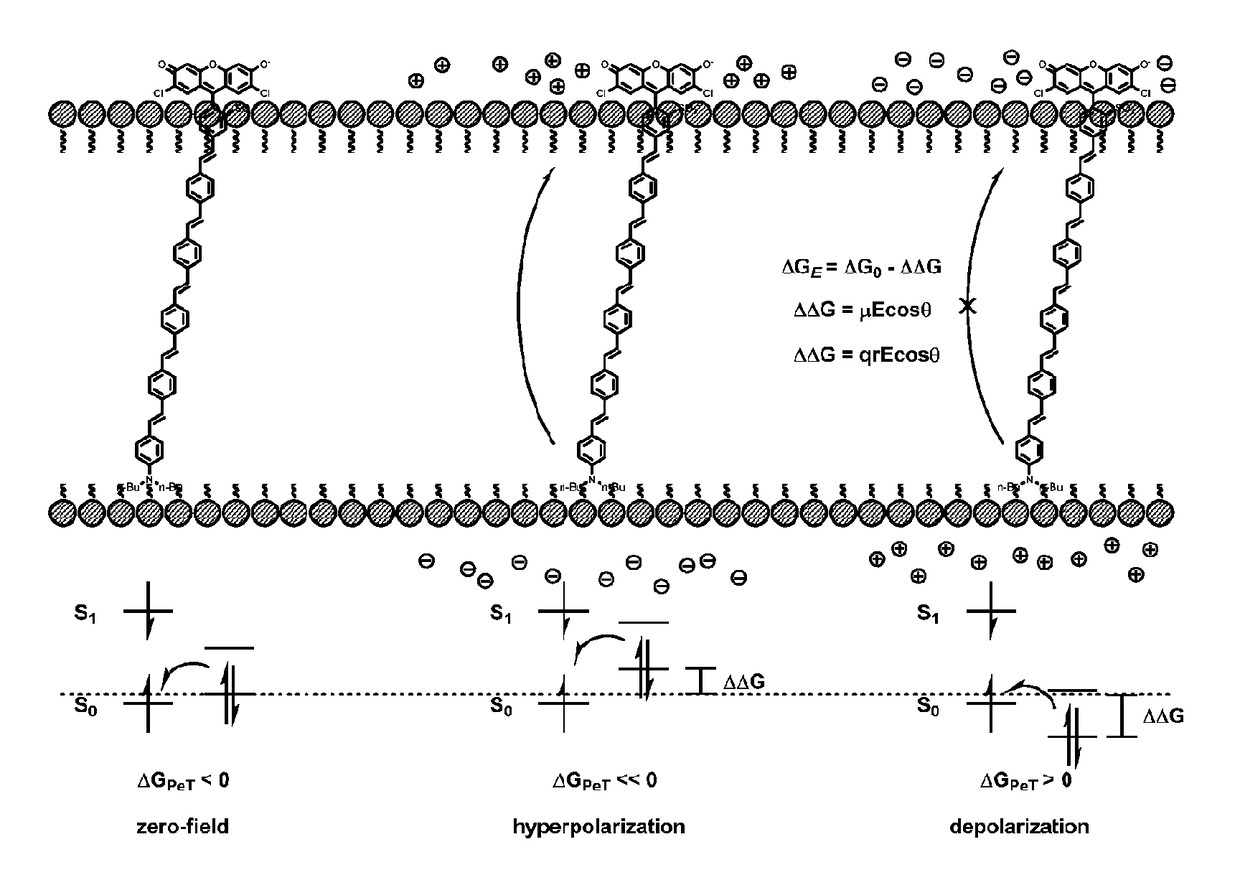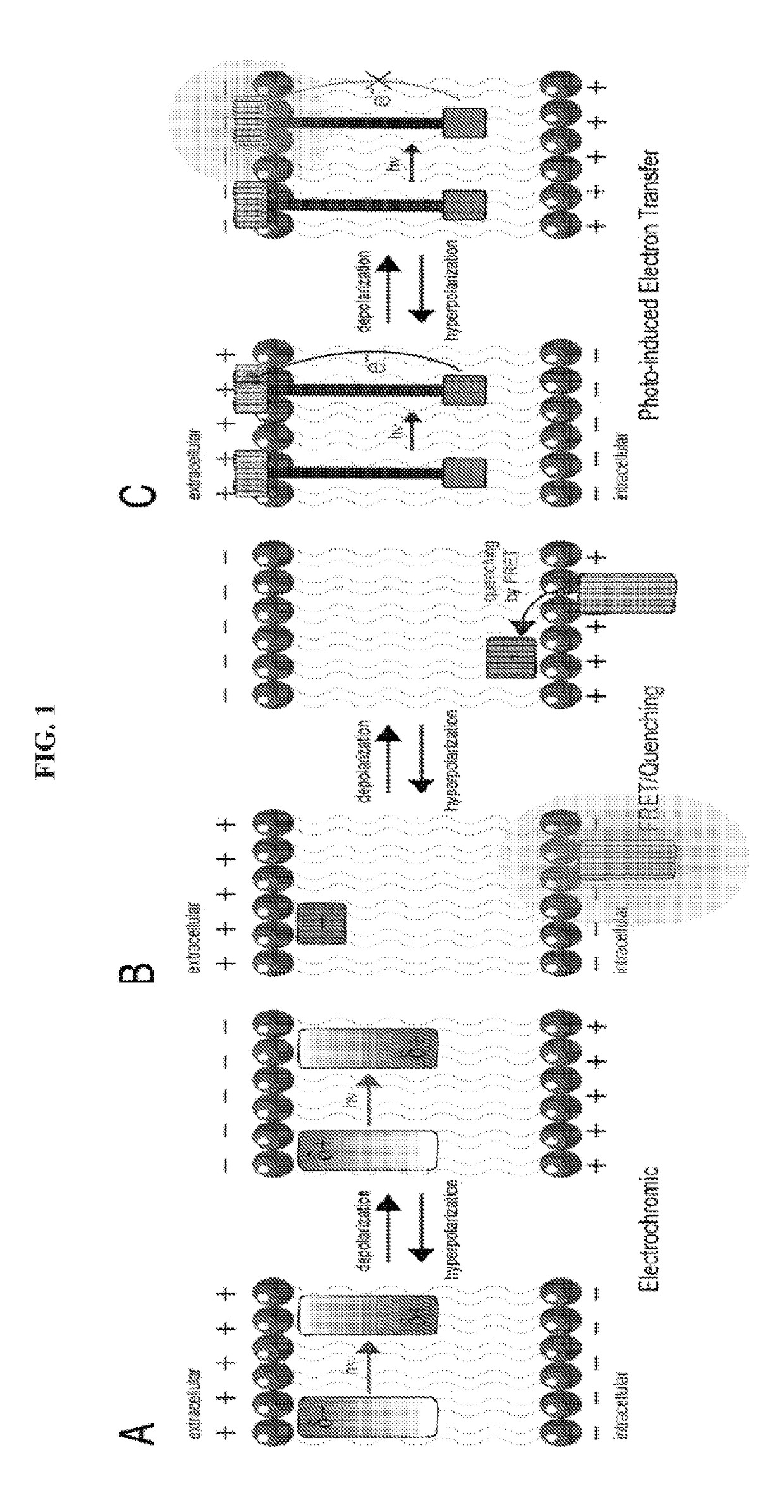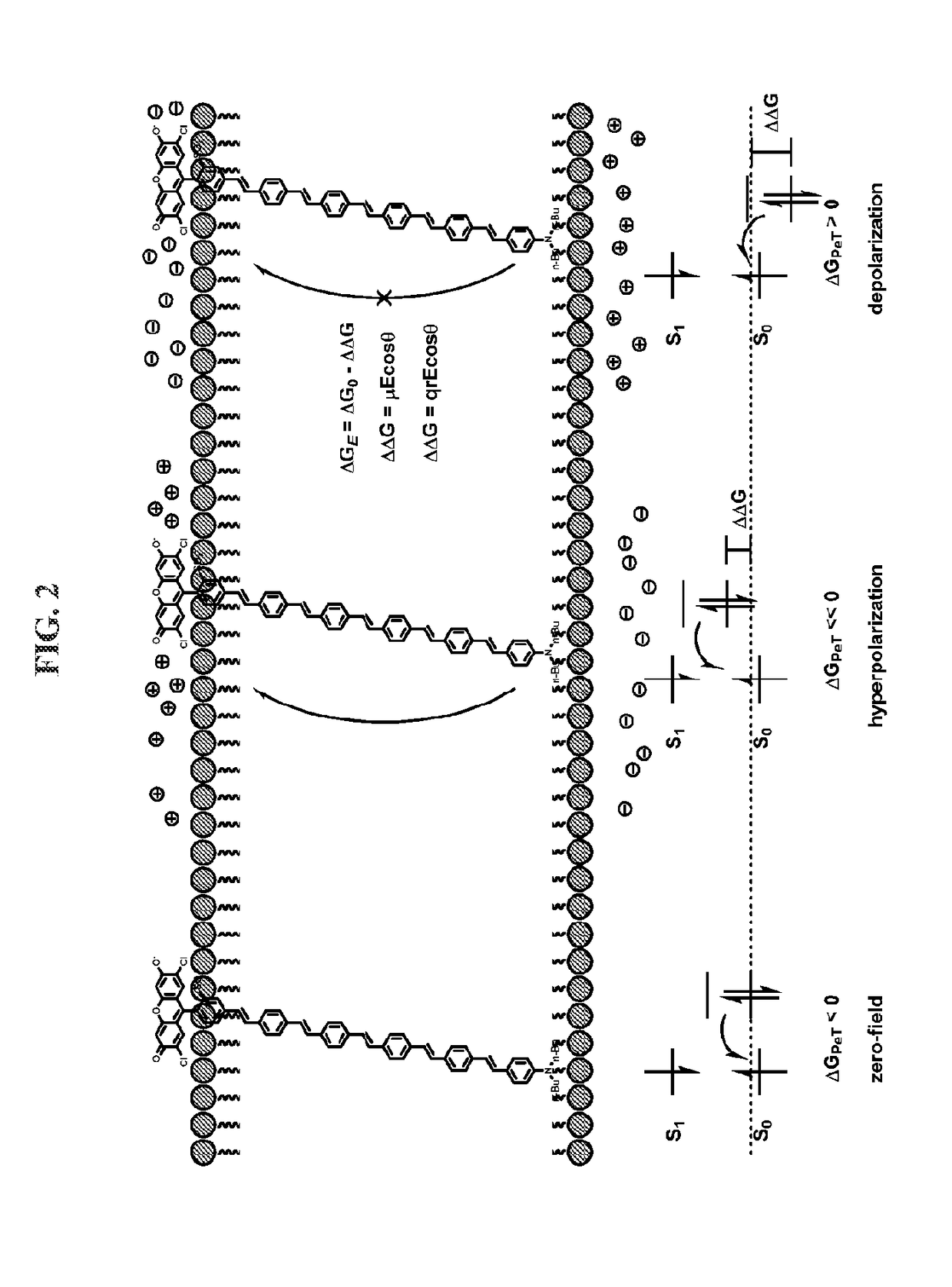Fluorescent probes for monitoring voltage by photo-induced electron transfer
a technology of photoinduced electron transfer and fluorescent probes, which is applied in the direction of fluorescence/phosphorescence, instruments, apoptosis detection, etc., can solve the problems of water solubility and hinder the synthesis of water, and achieve the effect of reducing the operative parameters, reducing the efficiency of the pet between the fluorophore and the inducible quencher moiete, and reducing the synthesis
- Summary
- Abstract
- Description
- Claims
- Application Information
AI Technical Summary
Benefits of technology
Problems solved by technology
Method used
Image
Examples
example 1
Design and Synthesis of VF Sensors
[0279]Our initial voltage sensors incorporate dichlorosulfofluorescein as a membrane-impermeant fluorophore, a p-phenylenevinylene (PPV) molecular wire, and N,N-dimethyl- or dibutylaniline as an electron-rich quencher (Scheme 1). VF1.4.Cl comprises 2,7-dichlorosulfofluorescein connected via one vinylene unit to dibutylaniline (hence VF1.4.Cl). VF2.4.Cl adds a second PPV unit, and VF2.1.Cl features the same configuration, with methyl substituted in place of butyl groups.
[0280]
[0281]Correct positioning of the fluorophore-wire donor within the membrane is vital to take advantage of the vectoral nature of the transmembrane electric field and electron transfer. First, the longitudinal axis of the molecular wire must be normal to the plane of the plasma membrane, to sample the full electric field. Second, dye molecules must all align in the same direction to avoid canceling out the electron transfer effect. Positioning the fluorophore at the extracellular...
example 2
Testing of VF1.4.Cl and VF2.4.Cl in HEK Cells
[0317]To test the efficacy of VF1.4.Cl and VF2.4.Cl as voltage sensors, the probes were loaded in HEK cells at a concentration of 2 μM. Passive staining for 15 minutes at 37° C. resulted in excellent membrane localization, as established by epifluorescence and confocal microscopy (FIG. 4). In contrast, when di-4-ANEPPS is loaded under identical conditions, significant internalization of the dye is observed. Optimal loading conditions for di-4-ANEPPS require loading for only 10 minutes at 4° C.
[0318]Membrane voltage of cells loaded with VF1.4.Cl or VF2.4.Cl were controlled by making tight-seal whole-cell recordings. Cells were maintained at a holding potential of −60 mV and stepped for 50 ms to various depolarizing and hyperpolarizing potentials (FIG. 5A), while simultaneously acquiring epifluorescence images. For both sensors, depolarizing steps result in fluorescence increases while hyperpolarizing steps decrease fluorescence intensity, ...
example 3
Characterization of VF Sensors in HEK Cells
[0321]The dibutyl (VFx.4.Cl) dyes stain the cell membranes of HEK293 cells when loaded at a concentration of 2 μM for 15 min at 37° C. in buffer with 0.1% DMSO as cosolvent (FIG. 9A, and FIG. 10). VF2.1.Cl requires even lower dye concentrations (100 nM) and gives bright staining of HEK cell membranes, which is likely to be because of the greater aqueous solubility of VF2.1.Cl compared with VF2.4.Cl in aqueous solution (FIG. 10). The membrane retention of the second generation dyes (VF2.x.Cl) is in contrast to di-4-ANEPPS, which at the same loading conditions, shows significant uptake into internal membranes. The bleach rates of the probes were tested in HEK cells and compared with di-4-ANEPPS. The bleach rates for VF1.4.Cl, VF2.4.Cl, and VF2.1.Cl at 7 W / cm2 were measured to be 3.9±0.1×10−2 1.8±0.1×10−2 s−1, and 8.0±0.1×10−3 s−1, respectively. These results are two-, four-, and ninefold smaller than di-4-ANEPPS, which has a bleach rate, unde...
PUM
| Property | Measurement | Unit |
|---|---|---|
| pH | aaaaa | aaaaa |
| membrane potential | aaaaa | aaaaa |
| frequency | aaaaa | aaaaa |
Abstract
Description
Claims
Application Information
 Login to View More
Login to View More - R&D
- Intellectual Property
- Life Sciences
- Materials
- Tech Scout
- Unparalleled Data Quality
- Higher Quality Content
- 60% Fewer Hallucinations
Browse by: Latest US Patents, China's latest patents, Technical Efficacy Thesaurus, Application Domain, Technology Topic, Popular Technical Reports.
© 2025 PatSnap. All rights reserved.Legal|Privacy policy|Modern Slavery Act Transparency Statement|Sitemap|About US| Contact US: help@patsnap.com



